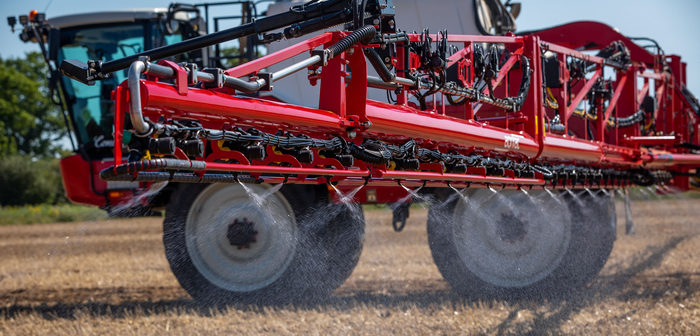Pre-emergence herbicides will be the cornerstone of this autumn’s black-grass control programme. But experience from the past three seasons has seen potential results undermined by increasing issues with wind.
With climate change, warming oceans create more vertical wind shear and raise the incidence of Atlantic hurricanes – with the frequency of category 4 and 5 storms predicted to more than double over late summer and autumn. For the UK, just catching the tail end of a hurricane is sufficient to bring stronger and more gusty winds disrupting spray application.
A growing body of evidence from trials results at the Syngenta black-grass Innovation Centre in Cambridgeshire has shown a 10% improvement in grassweed control from pre-emergence application within a few days of drilling, compared to peri- application soon after the crop has appeared. Any delay in application due to wind could see performance drop of by percentage points per day.
Syngenta application specialist, Harry Fordham, highlights that even on days with an average wind speed 6.5 km/hr (4 mph), seen as optimum spray application, there are frequently gusts well exceeding that level.
“Weather records for Barton Innovation Centre last autumn, for example, highlighted the challenge for operators, and the frequent need to use drift mitigation measures,” he reported. On 47 of 122 days the average wind speed, recorded at boom height, was above 7.2 km/hr, with no days without gusts of over 7.2 km.hr.
“That has really reinforced the value of 90% drift reduction technology (DRT) to keep sprays on target,” he advised. “It is particularly noticeable that in gusty conditions that disrupt the spray pattern with conventional nozzles, the 90% DRT nozzles maintain far more even distribution of droplets across the surface.”
Drift reduction technology also hugely reduces the risk of spray loss – with independent tests confirming that, at any given wind speed, new nozzle designs can successfully achieve 90% less drift, compared to conventional flat fan nozzles.
To cope with the frequently variable conditions, Harry now advocates that all sprayers kitted up for pre-emergence application should be fitted with the 90% DRT nozzles as standard, with a second set of Syngenta 3D Nozzles fitted, if possible, for use if spraying conditions are perfect.
“The Art of Application for pre-emergence herbicides is effectively the same with both nozzles. Results from over 400 trials have conclusively shown that application at 200 l/ha will give more reliable grassweed control.
“Furthermore, spraying at less than 12 km/hr hugely reduces any incidence of drift created by sprayer movement, as well as making it far easier for the operator to maintain a critical boom height of 50 cm.”
Harry also highlighted that utilising the Syngenta Spray Assist App gives operators on-the-fly access to crucial weather data for application decisions, along with a nozzle selector to suggest the optimum choices to cope with conditions.
“Selecting the appropriate 90% DRT angled nozzle design and size to deliver the desired output from operation at 2.0 to 2.5 bar, can deliver consistently better results.” Syngenta application trials have shown a 60% improvement in herbicide results from following the Low, Slow, Covered best practice guidelines, compared to historic farm practice.
Further application trials will continue on the Syngenta grass weed Innovation Centres this season, including a new Syngenta 3D90 Nozzle, specifically designed as a first to optimise spray coverage from an angled nozzle incorporating DRT.





